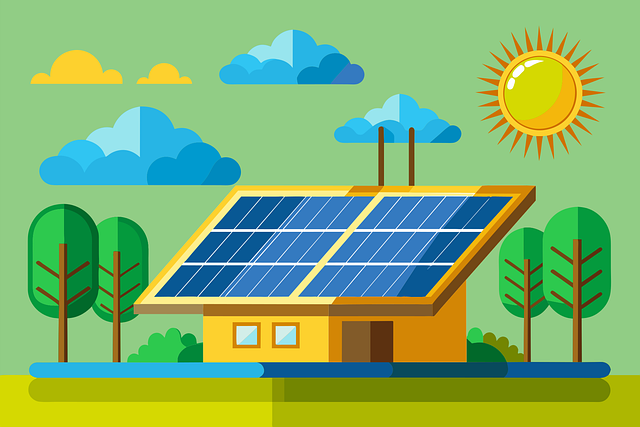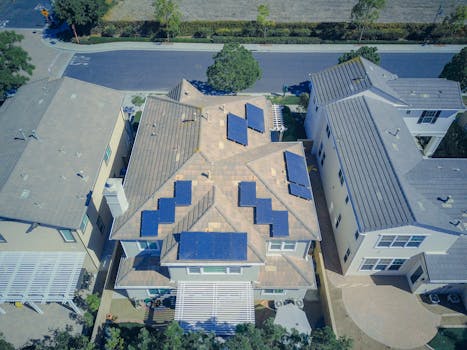“Empower Your Solar Journey: The Ultimate Inverter Installation Checklist!”
The complete solar inverter installation checklist is a comprehensive guide designed to ensure the successful and efficient installation of solar inverters in photovoltaic systems. This checklist covers essential steps, safety protocols, and necessary equipment to streamline the installation process, minimize errors, and enhance system performance. By following this checklist, installers can ensure compliance with industry standards, optimize energy conversion, and facilitate a smooth integration of solar technology into residential or commercial settings. It serves as a vital resource for both novice and experienced installers, promoting best practices and ensuring a reliable solar energy system.
Essential Tools for Solar Inverter Installation
When embarking on a solar inverter installation, having the right tools at your disposal is crucial for ensuring a smooth and efficient process. The installation of a solar inverter is a critical step in harnessing solar energy, and using the appropriate tools not only enhances safety but also contributes to the longevity and performance of the system. To begin with, a comprehensive toolkit should include basic hand tools such as screwdrivers, pliers, and wrenches. These tools are essential for securing the inverter to its mounting surface and connecting various components, ensuring that everything is tightly fastened and properly aligned.
In addition to hand tools, power tools play a significant role in expediting the installation process. A cordless drill is particularly valuable, as it allows for quick and efficient drilling of holes for mounting brackets and other fixtures. When selecting a drill, it is advisable to have a variety of drill bits on hand, including those suitable for wood, metal, and masonry, depending on the installation surface. Furthermore, a reciprocating saw can be beneficial for cutting through any obstacles that may arise during the installation, such as conduit or other structural elements.
Safety equipment is another critical aspect of the installation process. Personal protective equipment (PPE) should always be worn to minimize the risk of injury. This includes safety glasses to protect the eyes from debris, gloves to safeguard the hands from sharp edges, and hard hats if working in an area where overhead hazards may exist. Additionally, a first aid kit should be readily available on-site to address any minor injuries that may occur during the installation.
Moreover, electrical tools are indispensable when working with solar inverters. A multimeter is essential for testing voltage, current, and resistance, ensuring that all electrical connections are functioning correctly before the system is activated. This tool helps to verify that the inverter is properly connected to the solar panels and the electrical grid, preventing potential issues that could arise from faulty wiring. Wire strippers and crimpers are also necessary for preparing and connecting wires, allowing for secure and reliable electrical connections.
As the installation progresses, it is important to have a reliable way to manage and organize the various components and tools. Toolboxes or portable tool organizers can help keep everything in order, reducing the likelihood of misplacing items and ensuring that the installation proceeds without unnecessary delays. Additionally, having a ladder on hand is crucial for accessing elevated areas, particularly when mounting the inverter or connecting it to the solar panels. It is advisable to use a sturdy, non-conductive ladder to enhance safety while working at heights.
Finally, documentation tools such as a notepad or digital device can be invaluable for taking notes during the installation process. Recording measurements, observations, and any issues that arise can help streamline future maintenance and troubleshooting efforts. By ensuring that all necessary tools are available and organized, the installation of a solar inverter can be completed efficiently and effectively, paving the way for a successful solar energy system. In conclusion, equipping yourself with the essential tools not only facilitates a smoother installation process but also lays the groundwork for a reliable and high-performing solar energy system.
Step-by-Step Guide to Mounting the Solar Inverter

When it comes to installing a solar inverter, a systematic approach is essential to ensure optimal performance and safety. The first step in the mounting process is to select an appropriate location for the inverter. Ideally, this location should be close to the solar panels and the main electrical panel to minimize energy loss during transmission. Additionally, the area should be well-ventilated and protected from extreme weather conditions, as excessive heat or moisture can adversely affect the inverter’s efficiency and lifespan.
Once the location is determined, the next step involves gathering the necessary tools and materials. This typically includes a drill, mounting brackets, screws, a level, and safety gear such as gloves and goggles. It is crucial to have everything on hand before starting the installation to avoid interruptions that could lead to mistakes or safety hazards. After ensuring that all tools and materials are ready, the mounting brackets can be installed. These brackets should be securely fastened to the wall or structure using appropriate anchors, ensuring they can support the weight of the inverter.
With the brackets in place, the inverter can be carefully positioned onto them. It is important to check that the inverter is level during this process, as an uneven installation can lead to operational issues. Once the inverter is securely mounted, the next step is to connect the DC input from the solar panels. This connection must be made with care, as improper wiring can result in damage to the inverter or even pose safety risks. It is advisable to follow the manufacturer’s guidelines closely, ensuring that the polarity is correct and that all connections are tight.
After the DC connections are established, attention should turn to the AC output. This involves connecting the inverter to the main electrical panel, which is a critical step that requires adherence to local electrical codes and regulations. It is often recommended to consult with or hire a licensed electrician for this part of the installation, as they possess the expertise to ensure that the connections are safe and compliant. Once the AC connections are made, it is essential to install any necessary circuit breakers or disconnect switches, which serve as safety measures in case of an emergency or maintenance needs.
Following the electrical connections, the next phase involves configuring the inverter settings. Most modern inverters come equipped with digital displays and user interfaces that allow for easy configuration. This may include setting parameters such as grid voltage, frequency, and other operational settings. It is crucial to refer to the inverter’s manual during this process to ensure that all settings are optimized for the specific solar system and local grid conditions.
Finally, after all connections and configurations are complete, it is time to conduct a thorough inspection of the installation. This includes checking all connections for tightness, ensuring that there are no exposed wires, and verifying that the inverter is securely mounted. Once everything is confirmed to be in order, the inverter can be powered on, and the system can be tested to ensure it is functioning correctly. Monitoring the inverter’s performance over the following days will help identify any potential issues early on, allowing for timely adjustments or repairs.
In conclusion, mounting a solar inverter requires careful planning and execution. By following this step-by-step guide, installers can ensure a successful installation that maximizes the efficiency and longevity of the solar energy system.
Safety Precautions During Solar Inverter Installation
When embarking on the installation of a solar inverter, safety precautions are paramount to ensure a successful and secure setup. First and foremost, it is essential to familiarize oneself with the specific safety guidelines provided by the manufacturer of the solar inverter. Each model may have unique requirements and recommendations that must be adhered to in order to prevent accidents and ensure optimal performance. Therefore, reviewing the installation manual thoroughly before beginning the process is a critical first step.
In addition to understanding the manufacturer’s guidelines, it is crucial to wear appropriate personal protective equipment (PPE). This includes safety goggles to protect the eyes from debris, gloves to safeguard the hands from sharp edges and electrical components, and sturdy footwear to provide stability and protection while working. By equipping oneself with the right gear, the risk of injury can be significantly minimized.
Moreover, ensuring that the work area is clean and organized cannot be overstated. A cluttered workspace can lead to accidents, such as tripping over tools or materials. Therefore, it is advisable to clear the area of any unnecessary items and to keep tools neatly arranged. This not only enhances safety but also improves efficiency during the installation process.
Before proceeding with the installation, it is vital to disconnect the power supply to the solar inverter. This step is critical to prevent electrical shock, which can occur if the inverter is inadvertently activated during installation. To ensure that the power is completely off, it is recommended to use a multimeter to verify that no voltage is present at the installation site. This precaution is essential for both the safety of the installer and the integrity of the equipment.
Once the power is confirmed to be off, it is important to assess the structural integrity of the mounting surface. Whether the inverter is being installed on a wall or a dedicated mounting bracket, ensuring that the surface can support the weight of the inverter is crucial. If there are any signs of damage or weakness, it may be necessary to reinforce the area or choose an alternative location for installation.
As the installation progresses, maintaining a safe distance from live electrical components is vital. This means being aware of nearby wiring and ensuring that tools and equipment do not come into contact with any live circuits. Additionally, using insulated tools can provide an extra layer of protection against accidental electrical contact.
Furthermore, it is advisable to work with a partner during the installation process. Having an extra set of hands can not only make the installation more efficient but also provide immediate assistance in case of an emergency. Communication between partners is key; discussing each step of the installation can help prevent misunderstandings and ensure that both individuals are aware of their responsibilities.
Finally, once the installation is complete, it is essential to conduct a thorough inspection of the entire setup. This includes checking all connections, ensuring that the inverter is securely mounted, and verifying that all safety measures have been implemented. After confirming that everything is in order, the power can be restored, and the system can be tested. By following these safety precautions diligently, the installation of a solar inverter can be executed smoothly and safely, paving the way for a reliable and efficient solar energy system.
Common Mistakes to Avoid When Installing a Solar Inverter
Installing a solar inverter is a critical step in setting up a solar energy system, and while the process may seem straightforward, there are several common mistakes that can lead to inefficiencies or even system failures. Understanding these pitfalls is essential for ensuring a successful installation. One of the most frequent errors is neglecting to read the manufacturer’s instructions thoroughly. Each inverter model comes with specific guidelines that address installation requirements, wiring configurations, and safety precautions. Skipping this step can result in improper connections or settings that may compromise the inverter’s performance.
Another common mistake is overlooking the importance of proper placement. The location of the inverter is crucial for optimal performance. It should be installed in a shaded, well-ventilated area to prevent overheating, which can significantly reduce efficiency and lifespan. Additionally, placing the inverter too far from the solar panels can lead to voltage drops, which diminish the overall energy output. Therefore, careful consideration of the installation site is vital to avoid these issues.
Furthermore, many installers underestimate the significance of using the correct gauge of wiring. Using wires that are too thin can lead to overheating and energy loss, while excessively thick wires can be unnecessarily costly and cumbersome. It is essential to calculate the appropriate wire size based on the distance between the inverter and the solar panels, as well as the expected current load. This attention to detail ensures that the system operates efficiently and safely.
In addition to wiring, another mistake often made is failing to secure all connections properly. Loose connections can lead to arcing, which not only reduces efficiency but also poses a fire hazard. It is crucial to double-check all connections during installation, ensuring that they are tight and secure. This step is often overlooked in the rush to complete the installation, but it is vital for the long-term reliability of the system.
Moreover, many installers neglect to consider the inverter’s compatibility with other system components. Not all inverters work seamlessly with every type of solar panel or battery system. It is essential to ensure that the inverter is compatible with the specific components being used to avoid performance issues. This compatibility check should be part of the planning phase before installation begins.
Another mistake that can have significant consequences is failing to account for local regulations and permitting requirements. Many regions have specific codes and standards that must be adhered to when installing solar energy systems. Ignoring these regulations can lead to fines, forced removal of the system, or complications when trying to connect to the grid. Therefore, it is crucial to research and comply with local laws before proceeding with the installation.
Lastly, many installers overlook the importance of testing the system after installation. Once the inverter is installed, it is essential to conduct thorough testing to ensure that everything is functioning correctly. This includes checking the output voltage, monitoring performance metrics, and ensuring that all safety features are operational. Skipping this step can lead to undetected issues that may affect the system’s efficiency and safety.
In conclusion, avoiding these common mistakes when installing a solar inverter can significantly enhance the performance and longevity of a solar energy system. By paying attention to manufacturer guidelines, ensuring proper placement, using the correct wiring, securing connections, checking compatibility, adhering to regulations, and conducting thorough testing, installers can set the stage for a successful solar energy experience.
Q&A
1. **What are the essential tools needed for solar inverter installation?**
– Essential tools include a multimeter, screwdriver set, wire cutters/strippers, drill, level, and safety gear (gloves, goggles).
2. **What safety precautions should be taken before starting the installation?**
– Ensure the system is powered off, wear appropriate personal protective equipment (PPE), and follow local electrical codes and regulations.
3. **What are the key steps in the installation process of a solar inverter?**
– Key steps include selecting the installation location, mounting the inverter, connecting the DC input from the solar panels, connecting the AC output to the electrical panel, and configuring the inverter settings.
4. **What should be checked after the installation is complete?**
– After installation, check all electrical connections, ensure proper grounding, verify inverter settings, and conduct a system performance test to confirm functionality.
Conclusion
A complete solar inverter installation checklist ensures that all necessary steps and components are accounted for, promoting safety, efficiency, and compliance with regulations. By following this checklist, installers can systematically verify that the inverter is correctly installed, connected, and configured, ultimately leading to optimal system performance and longevity. Proper adherence to the checklist also minimizes the risk of errors and enhances the reliability of the solar energy system.




